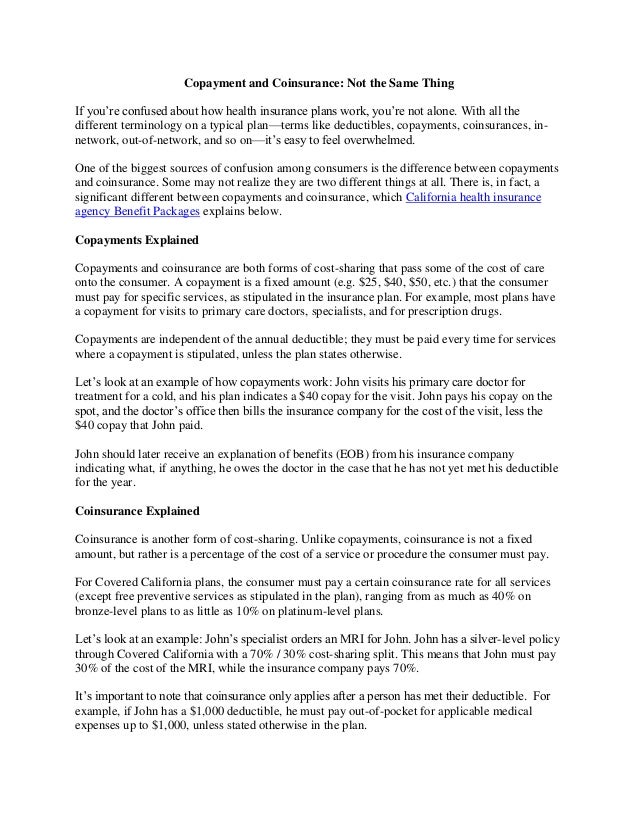

Therefore, this company shall feel the necessity of getting its load ( $20000 in this case) reinsured with another company.ĭifference Between CoInsurance and ReInsuranceĬoinsurance in medical health (casualty) is sharing of costs between insurer and insured, and in property insurance it is were the risk( one risk) is shared between different insurance companies. If a life company has 100000 lives all aged 20 and each insured for $10,000, and if this company now gets a fresh proposal from a man aged 20 but for an amount of $30,000 then problems would arise since the company shall have to run the risk of an additional amount of $20000 which will definitely imbalance the account if simply the new entrant dies first.


This ignorance or limitation of knowledge, in fact, has aggravated the necessity of reinsurance further. What he cannot forecast is which of the named persons will exactly die. In life insurance, the actuary can predict with some certainty as to how many lives of a given age will die within a certain period. So you use a portion of the premiums you receive to purchase a reinsurance contract that will payout in the event of an exceptionally large loss. However, if one of your customers gets into a serious accident, it could easily create a claim for which you would have to pay out several times that amount. insurance companies became insolvent because they were unable to pay claims resulting from the disaster.Īs a simplified example, let’s say you run a small auto insurance company and you’ve collected a total of $10,000 in premiums from your customers this year. For example, when Hurricane Andrew caused $15.5 billion in damage in Florida in 1992, seven U.S. If an insurer has too much exposure to a potentially costly event, then that event could cause the company to go bankrupt or even shut down if it’s unable to cover the loss. Reinsurance is the mechanism that insurance companies use to lower their risk or reduce their exposure to a specific catastrophic event. The simple explanation is that reinsurance is insurance for insurance companies. In other words, it protects insurance companies from financial ruin, thereby protecting the companies’ customers from uncovered losses. Essentially, reinsurance can limit the amount of loss an insurer can potentially suffer. Reinsurance is a form of insurance purchased by insurance companies in order to mitigate risk. After you reach the $5000 out-of-pocket maximum, your insurance company is responsible for paying up to the maximum policy limit, or the maximum benefit allowable under a given policy. Also, since you have already paid a total of $1,900 out-of-pocket during the policy term, the maximum amount that you will be required to pay for services for the rest of the year is $3,100. If you require another expensive procedure later in the year, your coinsurance provision takes effect immediately because you have previously met your annual deductible. Your insurance company will cover 80%, the remaining balance. After meeting your $1,000 deductible, you are then only responsible for 20% of the remaining $4,500, or $900. Since you have not yet met your deductible, you must pay the first $1,000 of the bill. Unfortunately, you require outpatient surgery early in the year that costs $5,500. Also, most health insurance policies include an out-of-pocket maximum that limits the total amount the insured pays for care in a given period.Īssume you take out a health insurance policy with an 80/20 coinsurance provision, a $1,000 out-of-pocket deductible, and a $5,000 out-of-pocket maximum.

However, these terms only apply after the insured has reached the term’s out-of-pocket deductible amount. Under the terms of an 80/20 coinsurance plan, the insured is responsible for 20% of medical costs, while the insurer pays the remaining 80%. One of the most common coinsurance breakdowns is the 80/20 split. Coinsurance also applies to the level of property insurance that an owner must buy on a structure for the coverage of claims. Some property insurance policies contain coinsurance provisions. In health insurance, a coinsurance provision is similar to a co-payment provision, except co-pays require the insured to pay a set dollar amount at the time of the service. Coinsurance is the amount, generally expressed as a fixed percentage, an insured must pay against a claim after the deductible is satisfied.


 0 kommentar(er)
0 kommentar(er)
